Carbohydrate-Binding Non-Peptidic Pradimicins for the Treatment of Acute Sleeping Sickness in Murine Models
- PMID: 27662652
- PMCID: PMC5035034
- DOI: 10.1371/journal.ppat.1005851
Carbohydrate-Binding Non-Peptidic Pradimicins for the Treatment of Acute Sleeping Sickness in Murine Models
Abstract
Current treatments available for African sleeping sickness or human African trypanosomiasis (HAT) are limited, with poor efficacy and unacceptable safety profiles. Here, we report a new approach to address treatment of this disease based on the use of compounds that bind to parasite surface glycans leading to rapid killing of trypanosomes. Pradimicin and its derivatives are non-peptidic carbohydrate-binding agents that adhere to the carbohydrate moiety of the parasite surface glycoproteins inducing parasite lysis in vitro. Notably, pradimicin S has good pharmaceutical properties and enables cure of an acute form of the disease in mice. By inducing resistance in vitro we have established that the composition of the sugars attached to the variant surface glycoproteins are critical to the mode of action of pradimicins and play an important role in infectivity. The compounds identified represent a novel approach to develop drugs to treat HAT.
Conflict of interest statement
The authors have declared that no competing interests exist.
Figures
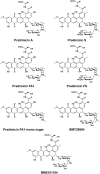
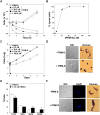


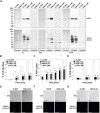




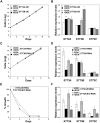

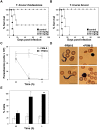
Similar articles
-
Surface Glycans: A Therapeutic Opportunity for Kinetoplastid Diseases.Trends Parasitol. 2017 Oct;33(10):775-787. doi: 10.1016/j.pt.2017.06.009. Epub 2017 Jul 28. Trends Parasitol. 2017. PMID: 28760415 Review.
-
Development of novel drugs for human African trypanosomiasis.Future Microbiol. 2011 Jun;6(6):677-91. doi: 10.2217/fmb.11.44. Future Microbiol. 2011. PMID: 21707314 Review.
-
[Human African trypanosomiasis].C R Seances Soc Biol Fil. 1996;190(4):395-408. C R Seances Soc Biol Fil. 1996. PMID: 8952890 Review. French.
-
Evaluating the impact of targeting livestock for the prevention of human and animal trypanosomiasis, at village level, in districts newly affected with T. b. rhodesiense in Uganda.Infect Dis Poverty. 2017 Feb 6;6(1):16. doi: 10.1186/s40249-016-0224-8. Infect Dis Poverty. 2017. PMID: 28162093 Free PMC article.
-
A new approach to chemotherapy: drug-induced differentiation kills African trypanosomes.Sci Rep. 2016 Mar 2;6:22451. doi: 10.1038/srep22451. Sci Rep. 2016. PMID: 26931380 Free PMC article.
Cited by
-
Chemistry and biology of specialized metabolites produced by Actinomadura.Nat Prod Rep. 2024 Mar 20;41(3):370-401. doi: 10.1039/d3np00047h. Nat Prod Rep. 2024. PMID: 38099919 Free PMC article. Review.
-
Overview of the role of kinetoplastid surface carbohydrates in infection and host cell invasion: prospects for therapeutic intervention.Parasitology. 2019 Dec;146(14):1743-1754. doi: 10.1017/S0031182019001355. Epub 2019 Oct 11. Parasitology. 2019. PMID: 31603063 Free PMC article. Review.
-
Potent antiviral activity of carbohydrate-specific algal and leguminous lectins from the Brazilian biodiversity.Medchemcomm. 2019 Jan 14;10(3):390-398. doi: 10.1039/c8md00508g. eCollection 2019 Mar 1. Medchemcomm. 2019. PMID: 30996857 Free PMC article.
-
Single-subunit oligosaccharyltransferases of Trypanosoma brucei display different and predictable peptide acceptor specificities.J Biol Chem. 2017 Dec 8;292(49):20328-20341. doi: 10.1074/jbc.M117.810945. Epub 2017 Sep 19. J Biol Chem. 2017. PMID: 28928222 Free PMC article.
-
Analysis of substrate specificity of Trypanosoma brucei oligosaccharyltransferases (OSTs) by functional expression of domain-swapped chimeras in yeast.J Biol Chem. 2017 Dec 8;292(49):20342-20352. doi: 10.1074/jbc.M117.811133. Epub 2017 Oct 17. J Biol Chem. 2017. PMID: 29042445 Free PMC article.
References
-
- Bangs JD, Doering TL, Englund PT, Hart GW. Biosynthesis of a variant surface glycoprotein of Trypanosoma brucei. Processing of the glycolipid membrane anchor and N-linked oligosaccharides. J Biol Chem. 1988;263(33):17697–705. Epub 1988/11/25. . - PubMed
-
- Zamze SE, Wooten EW, Ashford DA, Ferguson MA, Dwek RA, Rademacher TW. Characterisation of the asparagine-linked oligosaccharides from Trypanosoma brucei type-I variant surface glycoproteins. Eur J Biochem. 1990;187(3):657–63. Epub 1990/02/14. . - PubMed
-
- Zitzmann N, Mehlert A, Carrouee S, Rudd PM, Ferguson MA. Protein structure controls the processing of the N-linked oligosaccharides and glycosylphosphatidylinositol glycans of variant surface glycoproteins expressed in bloodstream form Trypanosoma brucei . Glycobiology. 2000;10(3):243–9. Epub 2000/03/08. cwd030 [pii]. . - PubMed
-
- Castillo-Acosta VM, Vidal AE, Ruiz-Perez LM, Van Damme EJ, Igarashi Y, Balzarini J, et al. Carbohydrate-binding agents act as potent trypanocidals that elicit modifications in VSG glycosylation and reduced virulence in Trypanosoma brucei . Mol Microbiol. 2013. Epub 2013/08/10. 10.1111/mmi.12359 . - DOI - PubMed
LinkOut - more resources
Full Text Sources
Other Literature Sources
Molecular Biology Databases

